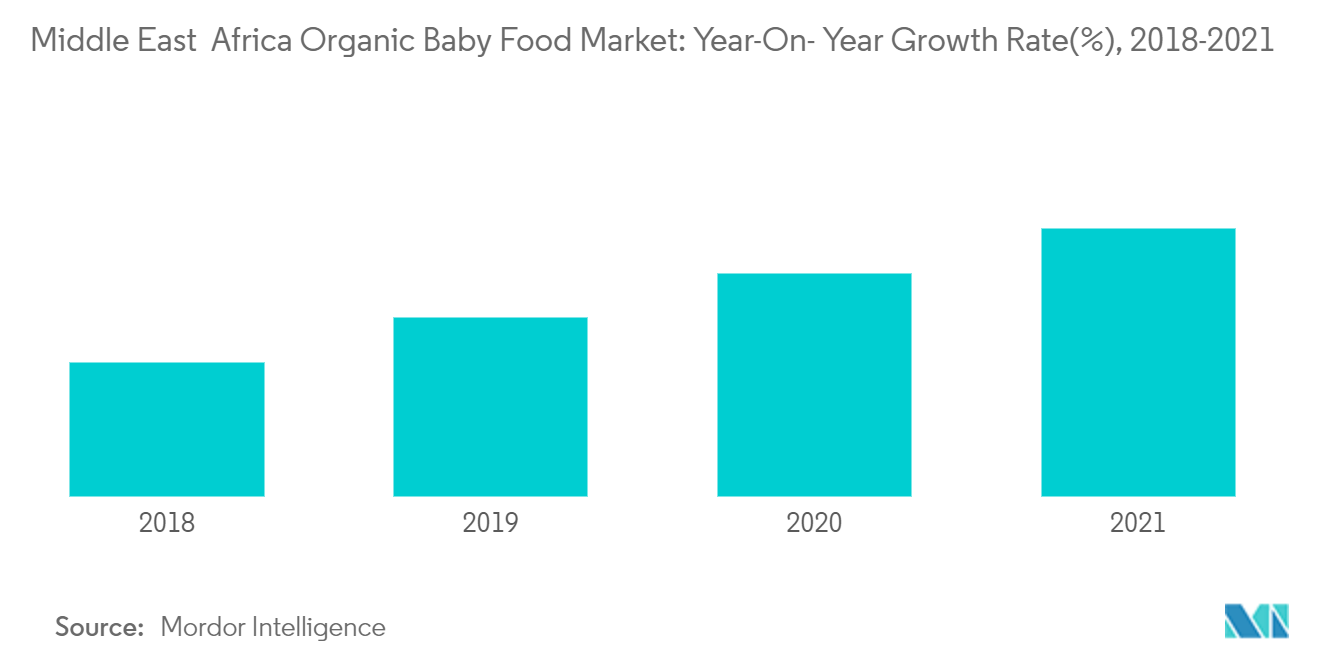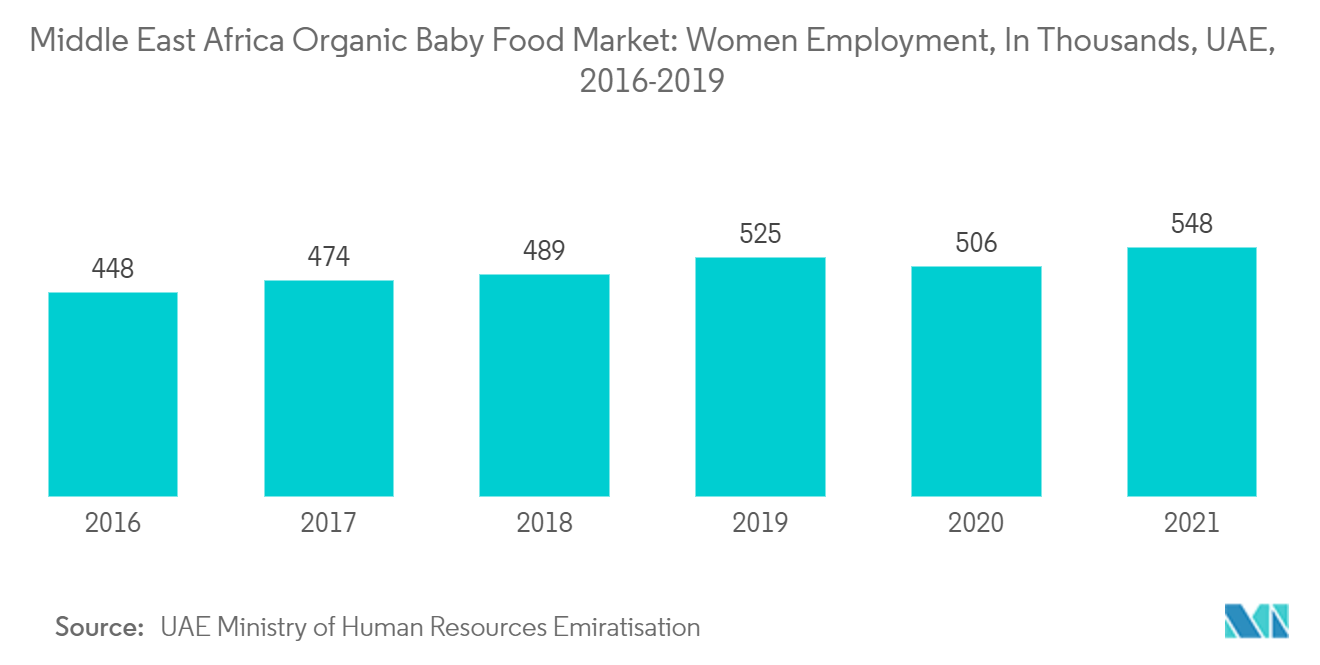Market Trends of Middle East & Africa Organic Baby Food Industry
This section covers the major market trends shaping the MEA Organic Baby Food Market according to our research experts:
Rise in Demand for Fortified Organic Baby Food
Parents are becoming increasingly aware of the impact of good nutrition on their children's growth and physical development, thereby seeking baby food and infant formulas that are rich in proteins, vitamins, minerals, and carbohydrates. As a result, organic baby food sales are growing as more manufacturers are fortifying or enriching their products with a variety of nutrients to provide additional health advantages. Among them are novel protein and fat combinations created to support brain growth, nucleotides to support eye health, and probiotics to support a healthy digestive tract are widely accepted by potential consumers. All major players such as Nestle SA, Danone SA, and Arla food Group among others offer fortified organic baby foods in the region.

United Arab Emirates Hold Prominent Market Share
The increasing working women population in the region is acting as a driver for the organic baby food market. In 2019, according to the Annual Economic Report of the UAE, the percentage of women working in the private sector was about 44.3%, an increase from 41.6% in 2017. Working mothers often choose ready-to-eat baby food due to the time constraint and abstaining from exclusive breastfeeding which in turn escalates the growth of the organic baby food market in the country. The ready-to-mix and instant formulas are gaining traction among the working women population.
The urban population is more inclined toward organic baby foods and the emergence of specialized online delivery platforms that are focused on mom-and-baby products such as deliver2mom, babyarabia.com, and others are enabling convenience in the purchase of organic baby food. Further, online retailers offer a wider collection of local and international brands, allowing parents to shop for the best suitable products as per the taste preferences of their child.


